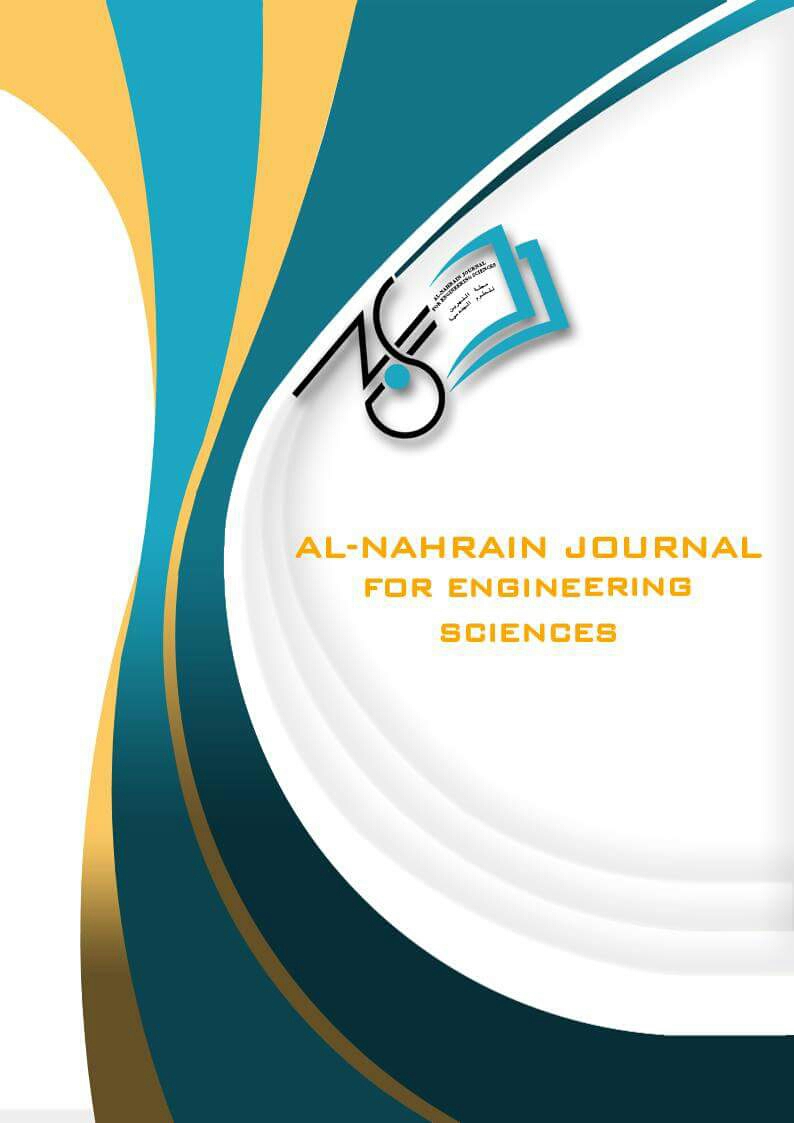Abstract
The mixing technique was applied in this study to enhance the strength performance of the cement. The addition of 3% by weight of hydroxyapatite (HA) nanoparticles were mixed with 97% polymethyl methacrylate (PMMA) acrylic polymer, which has a nano size to serve as the matrix material. The surface roughness and continuous porosity of the bone cement were found to be slightly increased by the incorporation of nanoparticles, which enhanced bone-implant osseointegration and ingrowth. Atomic force microscopy (AFM) analysis revealed that the addition of hydroxyapatite (HAp) nanoparticles resulted in a surface roughness value (Sa) of 16.25 nm, which is similar to that of natural bone. The energy-dispersive X-ray spectroscopy (EDS) mapping results discover precentor material and uniform distribution. The Sample exhibited promising results in the antibacterial test, showing efficacy against bacteria both with and without sterilization, confirming its antibacterial properties. The mechanical tests conducted on the sample, including tensile, compression, bending and Vickers hardness tests, yielded favorable results and indicated that the sample is suitable for its intended application. In the theoretical works the design of the bone, screw, and bone plate was conducted using SolidWorks, followed by an analysis using ANSYS under both axial and bending load conditions. The theoretical analysis revealed that the safety factor was less than 1 when an axial load of 13 N was applied and a bending load of 2 N was applied, indicating that the structure may not be able to withstand these loads safely. Under both ambient and physiologically relevant conditions in the human body, HA and PMMA have demonstrated to be excellent choices for enhancing the clinical performance of bone cement. This, in turn, can lead to increased longevity of implants, decreased patient risk, and lower healthcare costs.
Keywords
ANSYS
hydroxyapatite
Polymer
Solid work
Abstract
تم تطبيق تقنية الخلط في هذه الدراسة لتعزيز أداء قوة الأسمنت. تم خلط إضافة 3% وزنًا من جسيمات الهيدروكسيباتيت النانوية (HA) مع بوليمر أكريليك بولي ميثيل ميثاكريلات (PMMA) بنسبة 97%، والذي له حجم نانو ليكون بمثابة مادة المصفوفة. لاحظ أن خشونة السطح والمسامية المستمرة لأسمنت العظام قد زادت بشكل طفيف من خلال دمج الجسيمات النانوية، مما عزز التكامل العظمي والنمو الداخلي للعظام. كشف التحليل المجهري للقوة الذرية (AFM) أن إضافة جسيمات الهيدروكسيباتيت النانوية (HAp) جعلة خشونة السطح (Sa) تبلغ 16.25 نانومتر، وهي مماثلة لتلك الموجودة في العظام الطبيعية. تكتشف نتائج رسم خرائط التحليل الطيفي للأشعة السينية (EDS) المشتتة من الطاقة المواد الأولية والتوزيع الموحد. أظهرت العينة نتائج جيدة في اختبار مضاد البكتيريا، حيث أظهرت فعاليتها ضد البكتيريا سواء مع أو بدون تعقيم، مما يؤكد خصائصها المضادة للبكتيريا. وقد أسفرت الاختبارات الميكانيكية التي أجريت على العينة، بما في ذلك اختبارات الشد والضغط والانحناء وصلابة فيكرز، عن نتائج إيجابية وأشارت إلى أن العينة مناسبة للتطبيق المقصود منها. في الأعمال النظرية، تم إجراء تصميم العظم والمسمار ولوحة العظم باستخدام برنامج SolidWorks، متبوعًا بالتحليل باستخدام ANSYS في ظل ظروف الحمل المحوري والانحناء. أظهر التحليل النظري أن عامل الأمان كان أقل من 1 عند تطبيق حمل محوري قدره 13 نيوتن وحمل انحناء قدره 2 نيوتن، مما يشير إلى أن الهيكل قد لا يكون قادرًا على تحمل هذه الأحمال بأمان. في ظل الظروف المحيطة والفسيولوجية ذات الصلة في جسم الإنسان، أثبت HA و PMMA أنهما اختياران ممتازان لتعزيز الأداء السريري للأسمنت العظمي. وهذا بدوره يمكن أن يؤدي إلى زيادة طول عمر الغرسات، وتقليل المخاطر على المريض، وانخفاض تكاليف الرعاية الصحية
